Ants
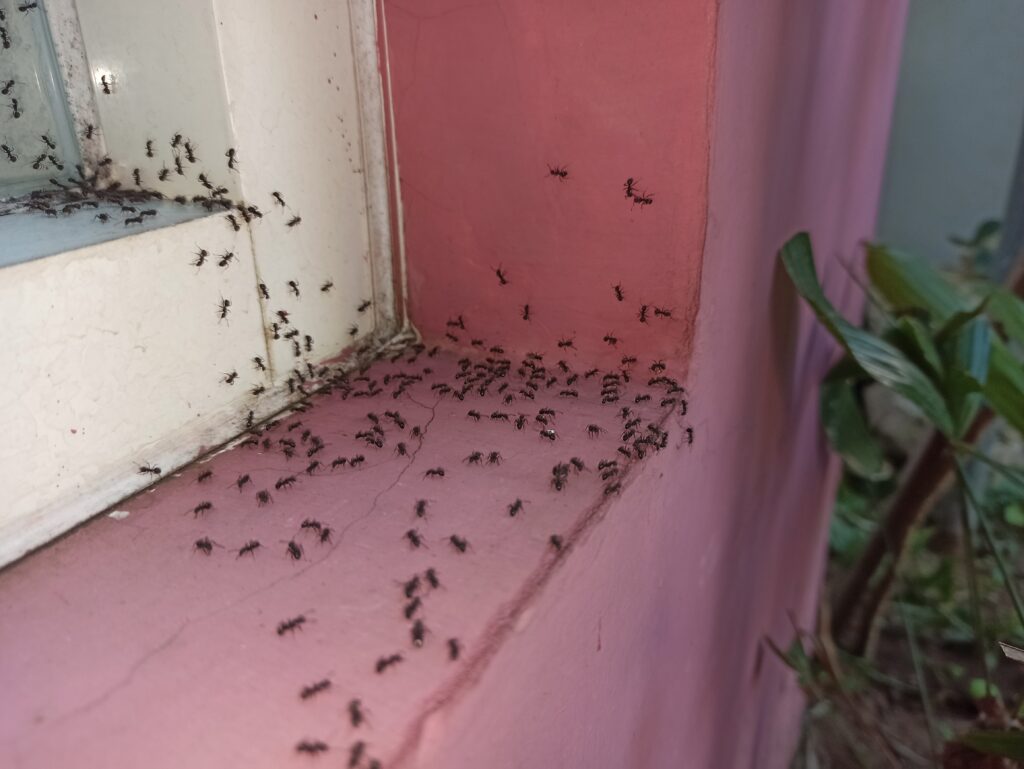
Ants are everywhere, under sidewalks, inside walls, deep in the soil, and high in tree canopies. With a global population estimated at 20 quadrillion, there are roughly 2.5 million ants for every human on Earth. Most species measure about 0.2 inches long, which sounds tiny, until you line them up. Nose to tail, the entire global population of ants would stretch over 1.6 billion miles. That’s enough to circle the planet’s 24,901-mile equator more than 64,000 times. You could line them to the Moon and back, over 3,300 times, and still have ants to spare. It’s a truly mind-bending scale of life that’s happening underfoot, every day.
Despite their size, ants represent one of the largest animal biomasses on land. In some ecosystems, they outweigh all vertebrates combined. They’re farmers, builders, soldiers, and foragers. Some species herd aphids, others build floating rafts, and leafcutter ants even cultivate underground fungus farms. Their tunnels aerate the soil, their scavenging cleans the landscape, and their colonies act as superorganisms, coordinated with no leader, just instinct. If every ant joined together to form a single living ring, they wouldn’t just wrap the Earth, they’d hold it together. Source: Proceedings of the National Academy of Sciences
Bees
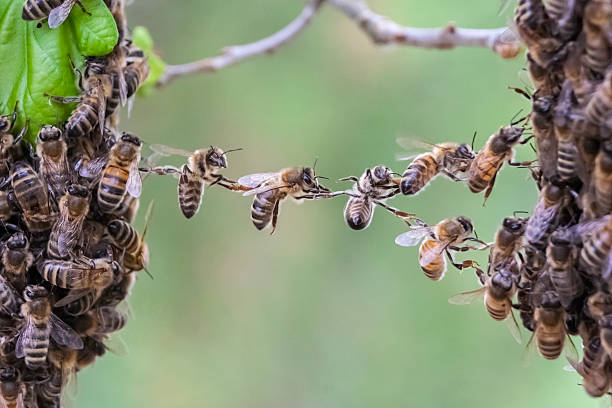
Bees may be small, but globally, they add up fast. There are over 20,000 known bee species, and when you combine wild populations with domesticated honeybee hives, global estimates soar past 2 trillion individuals. The average honeybee measures about half an inch long. Lined up end to end, that adds up to more than 11 million miles of bees, enough to circle the Earth’s 24,901-mile equator more than 440 times. That’s like building a buzzing highway around the planet that could lap the globe every day for more than a year. And that’s just bees, we’re not even counting wasps or solitary species that aren’t fully surveyed yet.
Their physical presence is one thing, but their influence is far greater. Bees pollinate more than 75% of the fruits, vegetables, nuts, and flowers we rely on. A single colony can service hundreds of millions of blooms during peak foraging season. Their social structures are as intricate as their hives, complete with queens, nurses, builders, and scouts. And while honeybees get most of the press, many native bee species are even more efficient at pollination, despite working solo. Every almond, apple, and tomato we eat owes its existence to a creature smaller than your pinky nail. Multiply that by two trillion, and the Earth’s bee-belt becomes a lifeline as much as a statistic. Source: Food and Agriculture Organization of the United Nations (FAO)
Sardines
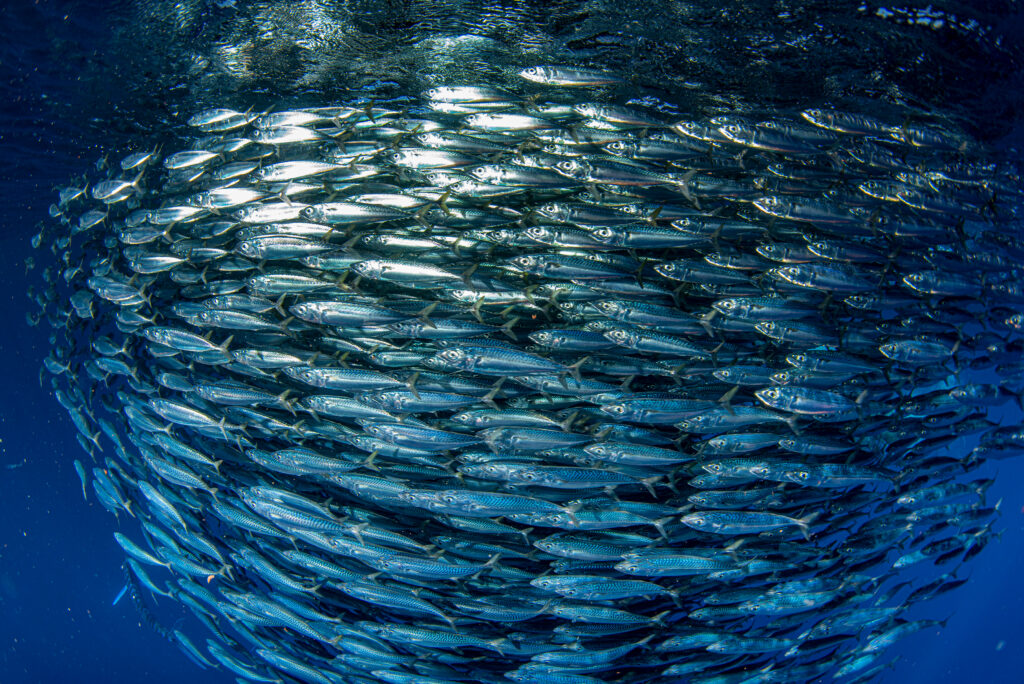
Sardines are among the most abundant fish on Earth, with global populations estimated at over 10 trillion individuals. Each sardine measures around 8 inches in length. If you lined every sardine nose to tail, their silvery bodies would stretch an astonishing 1.2 billion miles. That’s enough to circle the Earth’s 24,901-mile circumference nearly 50,000 times. To visualize it another way, many sardines could create a shimmering bridge to the Moon and back more than 2,500 times. And because they often travel in dense schools, those miles of fish aren’t just theoretical; they often materialize in real-time, turning entire stretches of ocean into rivers of moving silver.
Their global presence is more than just impressive, it’s essential. Sardines are the foundational forage fish in many marine ecosystems. They’re the primary diet for seabirds, seals, dolphins, and giant predators like tuna and whales. Sardine migrations are so massive that they can be tracked from space, with schools stretching for miles. In some coastal areas, sardine runs are economic events, sustaining local fisheries and tourism. Packed with protein, omega-3s, and sustainability credentials, sardines punch far above their weight both ecologically and nutritionally. When it comes to sheer numbers and planetary impact, they’re one of the most important and overlooked creatures in the sea. Source: Food and Agriculture Organization – Sardinella Aurita Profile
Krill

Krill may look like shrimp, but they fuel one of the largest food chains on Earth. Found in every ocean and especially abundant in Antarctic waters, these translucent crustaceans average just 2 inches in length. And yet, the estimated global population exceeds 500 trillion. If you laid every krill end to end, they’d stretch over 15 billion miles, enough to wrap around the Earth’s 24,901-mile equator more than 600,000 times, or draw a continuous line from Earth to Pluto and back. That’s an ocean of krill long enough to encircle every continent thousands of times.
Their ecological importance is almost unmatched. Krill form dense swarms that can span over 60 square miles, turning the water pink with life. They’re the primary diet of whales, seals, penguins, and countless fish, and their daily vertical migrations, rising to the surface at night and sinking by day, help cycle carbon from surface waters to the ocean’s depths. Blue whales can eat up to 8,000 pounds of krill in a single day. Without krill, much of the planet’s marine food web would collapse. Their numbers may be astronomical, but their role is deeply personal to nearly everything that swims. Source: British Antarctic Survey – Krill Facts
Earthworms
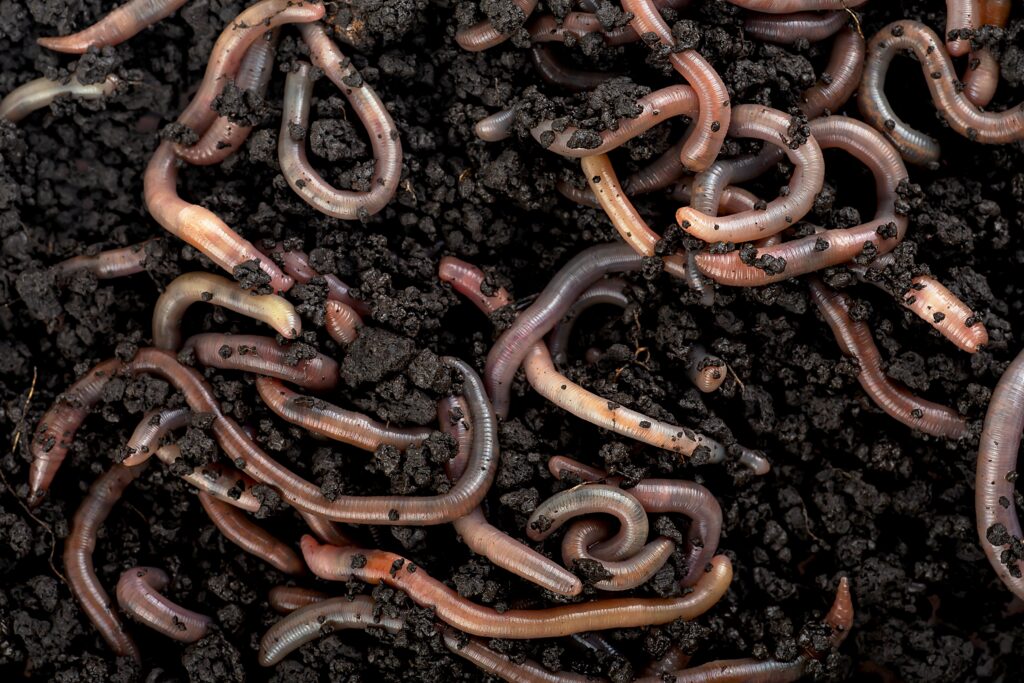
Earthworms may not be glamorous, but they’re some of the most numerous animals on Earth. Scientists estimate the global population at over 1 quadrillion, that’s a thousand trillion worms wiggling beneath our feet. The average earthworm measures about 4 inches long. Line up every individual nose to tail, and you’d get a living ribbon over 63 billion miles long. That’s enough to circle Earth’s 24,901-mile equator more than 2.5 million times, or build a slow-motion superhighway that reaches deep beyond Pluto. And the majority of that distance would be beneath the soil, working in darkness, reshaping the ground we walk on.
Beyond sheer numbers, earthworms are one of the planet’s most important ecosystem engineers. A single acre of healthy soil can contain over a million of them, and together they aerate dirt, break down dead matter, and improve nutrient cycling in forests, gardens, and farms. Their castings enhance plant growth, and their tunneling helps reduce runoff and erosion. Earthworms have even been used to clean contaminated soil in industrial zones through a process called vermiremediation. While often overlooked, their global impact is massive, quiet, essential, and longer than nearly any species alive. Source: Natural History Museum London – Earthworm Ecology
Chickens
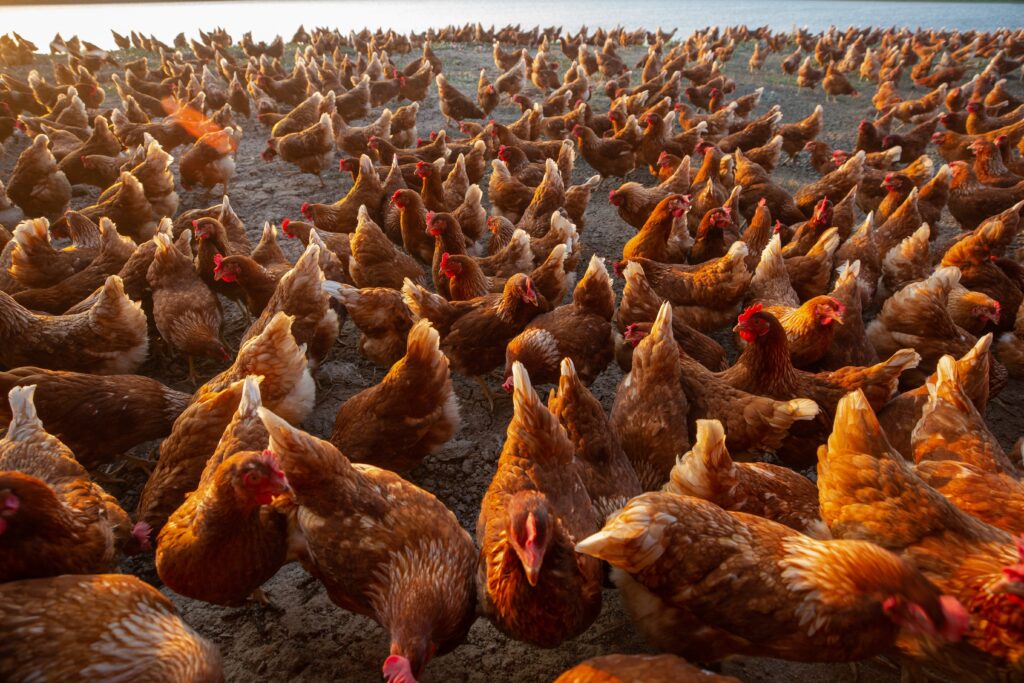
With a global population hovering around 35 billion, chickens are the most numerous bird species on the planet, and by far the most visible. The average chicken measures about 18 inches from beak to tail. Lined up end to end, every chicken on Earth would stretch more than 994 billion inches, or roughly 15.7 million miles. That’s enough poultry to circle Earth’s 24,901-mile equator over 600 times, or reach all the way to the Moon and back more than 30 times. And that’s not even counting the billions more raised and processed each year for food.
But chickens aren’t just common, they’re culturally embedded. Revered, roasted, and ritualized in nearly every society, chickens are part of human life in a way few animals ever achieve. In some countries, there are more chickens than people by a factor of five. Backyard flocks have become urban staples, and in rural communities, they’re still economic lifelines. While we might associate them with coops and cartoons, the numbers don’t lie: chickens are quietly forming one of the largest biological belts around the planet. Source: Food and Agriculture Organization – Chicken Population Stats
Humans

There are more than 8 billion humans on Earth today, each averaging about 5.5 feet in height. Lined up from toe to head, that global lineup would stretch over 44 billion feet, or about 8.3 million miles. That’s enough to circle the planet’s 24,901-mile equator more than 330 times, or form a people-chain from Earth to the Moon and back nearly 18 times. And that’s just standing shoulder to shoulder, factor in arm spans or walking space, and we’d double that distance easily. We often think of our numbers in terms of population growth or housing demand, but lined up physically, we start to grasp just how much space we really occupy.
Unlike other species on this list, humans don’t just wrap the planet, we reshape it. Our infrastructure has rerouted rivers, lit up the sky, and even altered the atmosphere. We’ve built outposts on ice sheets and launched satellites into orbit, extending our presence far beyond the surface. But zoom out, and we’re still just a sea of upright primates occupying a thin layer of biosphere. We may be the only species tracking these numbers, but when you lay it all out in linear miles, it’s clear: we are everywhere. Our footprints, literal and digital, form one of the most impactful and visible rings around the Earth. Source: United Nations World Population Dashboard
Rats
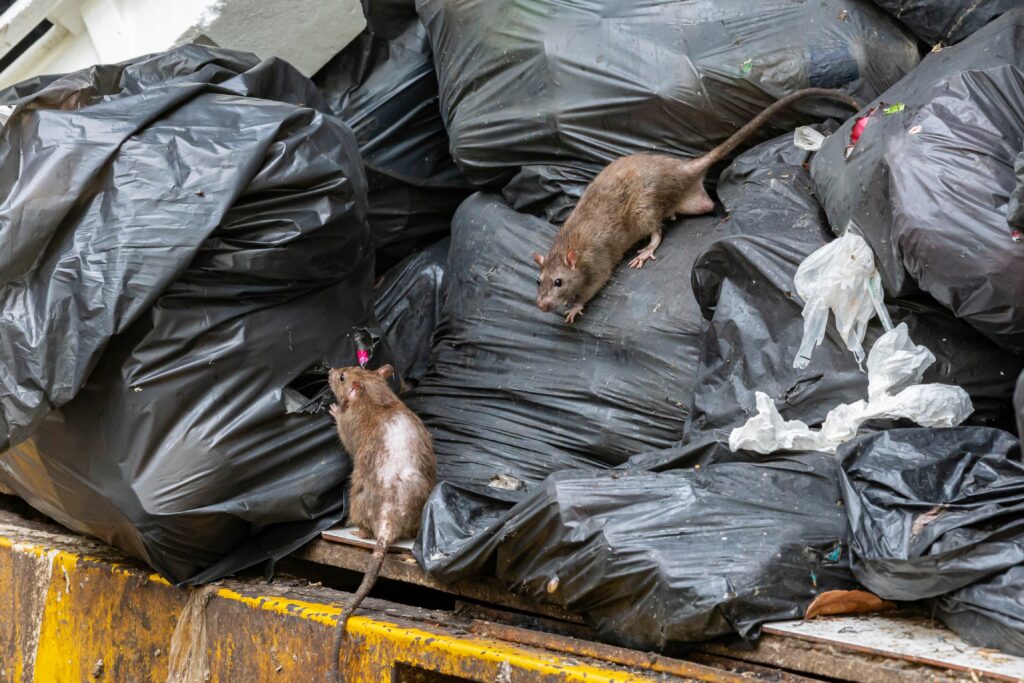
Rats have followed humans into nearly every corner of the world, from subway tunnels in Tokyo to grain silos in rural farms. The global rat population is estimated at over 7 billion, though some experts believe it may be much higher. With an average body length of 16 inches, nose to tail, lining up every rat would stretch over 112 billion inches, or about 1.77 million miles. That’s enough to circle Earth’s 24,901-mile equator more than 70 times. If every rat walked in the same direction, they could pave a living highway from New York to Los Angeles and back, nearly 320 times over.
What makes rats so remarkable is not just their reach, but their resilience. A single pair of rats can produce up to 15,000 descendants in one year. In New York City alone, there are an estimated 3 million rats, about one for every three people. They’re brilliant problem-solvers and escape artists, capable of squeezing through openings the size of a quarter and surviving falls from five-story buildings. Though often loathed, rats are key players in scientific research, disease ecology, and urban evolution. Like it or not, they’ve built an empire beneath our feet. Source: Smithsonian Magazine – How Many Rats Are in NYC?
Bats
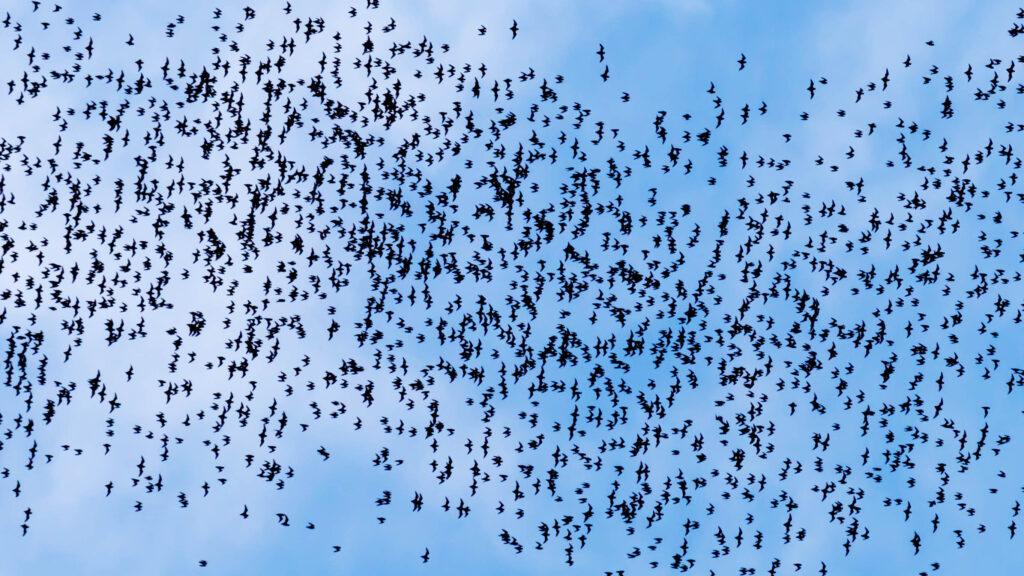
Bats may be nocturnal and often overlooked, but they make up nearly one-quarter of all mammal species on Earth. Globally, scientists estimate the population at well over 1 billion bats. With an average wingspan of about 12 inches and a body length of roughly 4 inches, if you lined them nose to tail, not wingtip to wingtip, you’d get over 66,000 miles of bats. That’s enough to circle the planet’s 24,901-mile equator nearly three times. And given that many bats migrate long distances or emerge in clouds of millions, the idea of a bat-wrapped Earth doesn’t seem too far off.
Bats are the only true flying mammals, and their ecological roles are as vast as their range. They pollinate plants, disperse seeds, and eat up to 1,200 insects an hour, making them essential pest control in both wild and agricultural ecosystems. Some species live in caves with colonies that number in the tens of millions, like the Mexican free-tailed bats in Texas. Though they often get a bad reputation, bats are key to everything from tequila production to forest regeneration. They’re quiet, fast, and incredibly efficient, proof that even small creatures can cast a long shadow across the Earth. Source: Bat Conservation International – Bat Facts
Jellyfish

Jellyfish have been drifting through Earth’s oceans for over 500 million years—long before dinosaurs, trees, or even insects. Though population estimates vary wildly, some marine biologists believe over 200 trillion jellyfish are floating through the seas at any given moment. The average jellyfish spans around 10 inches in diameter, and if you lined them up tentacle to bell, they’d stretch more than 31.5 trillion inches, or nearly 500 million miles. That’s enough jellyfish to wrap around Earth’s 24,901-mile equator over 20,000 times, or to drift all the way to Mars and back. And that’s just today’s jellyfish. Considering their explosive blooms, that distance likely doubles in a matter of weeks during peak seasons.
What’s even more astonishing is how jellyfish thrive where others fail. They can survive in low-oxygen “dead zones,” tolerate acidic water, and reproduce rapidly. Massive swarms have shut down power plants, clogged fishing gear, and devastated coastal tourism. Some blooms are so dense they turn the ocean into jelly. And while they may lack brains, bones, and blood, jellyfish play critical roles in marine food webs, feeding turtles, sunfish, and birds. As climate change and overfishing reshape the seas, jellyfish populations are rising. They may seem ghostlike, but in terms of presence and persistence, jellyfish are the pulsing proof that nature always finds a way. Source: Smithsonian Ocean – Jellyfish and Comb Jellies
Penguins
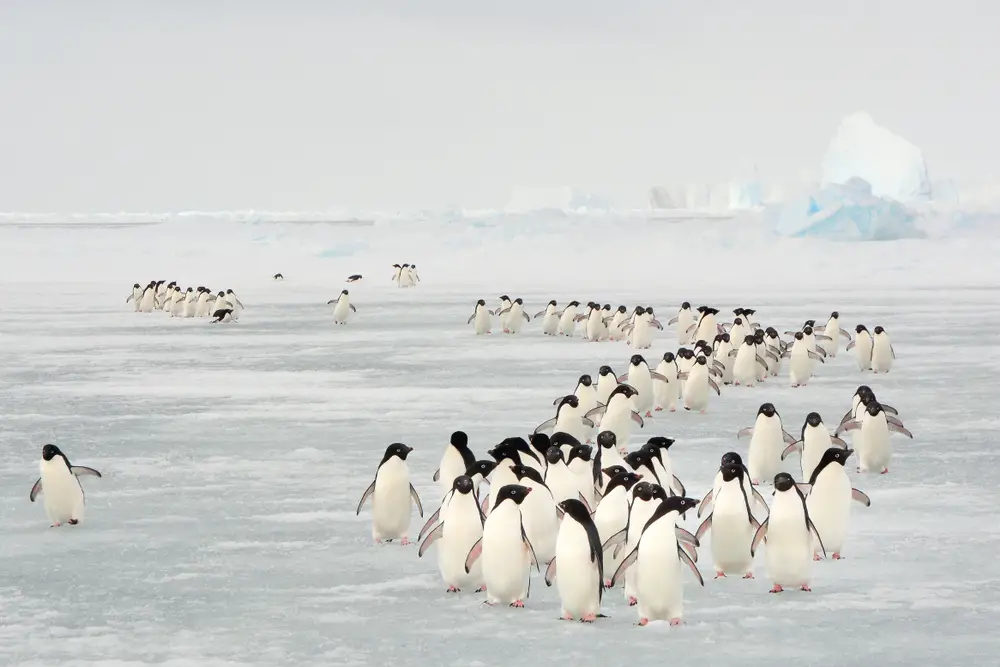
There are more than 50 million penguins across the Southern Hemisphere, with some species forming colonies of hundreds of thousands. The average penguin, depending on species, stands about 2.5 feet tall. Line up all 50 million of them nose to tail, and you’d get a waddling line roughly 125 million feet long, or about 23,700 miles. That’s just shy of Earth’s 24,901-mile equator, meaning the global penguin population could almost circle the entire planet, flipper to flipper, with just a few miles to go.
But while penguins can’t fly, their presence stretches far and wide. From the icy cliffs of Antarctica to temperate shores in New Zealand, South Africa, and even the Galápagos Islands, they span oceans and hemispheres. Emperor penguins trek over 60 miles across the ice to nest, while other species dive hundreds of feet in search of krill and sardines. Whether they’re sliding on bellies or clustered in tightly packed huddles to survive the cold, penguins wrap the planet in charisma, resilience, and more reach than we usually give them credit for. Source: British Antarctic Survey – Penguin Populations
Mosquitoes
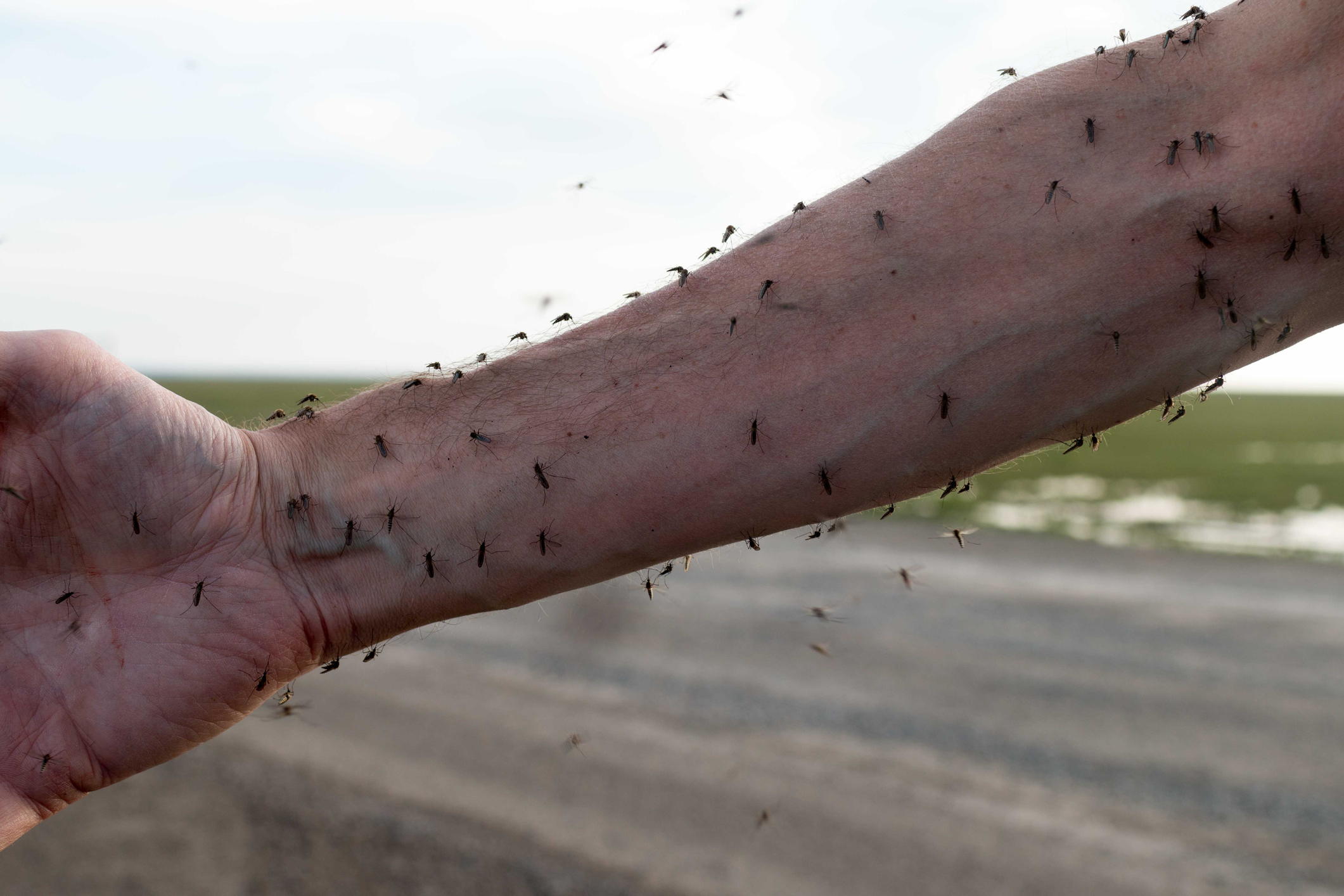
Mosquitoes are tiny, but their numbers are incomprehensibly vast. Scientists estimate there are well over 100 trillion mosquitoes on Earth at any given time. With an average length of just 0.15 inches, lining them all up end to end would create a buzzing chain stretching over 1.5 trillion inches, or around 24 million miles. That’s enough to circle Earth’s 24,901-mile equator nearly 1,000 times, more than enough to form a global mosquito net that would haunt even your wildest camping nightmares.
They might be small, but mosquitoes have an outsized impact. They’re the deadliest animals on Earth, transmitting diseases like malaria, dengue, and Zika, and causing more than 700,000 human deaths annually. Found on every continent except Antarctica, they thrive in heat, humidity, and even urban gutters. While we tend to think of them as summer pests, their global dominance is real and measurable. From the tropics to the tundra, they’ve quite literally wrapped the planet in wings, whines, and bites. Source: World Health Organization – Vector-Borne Diseases
Cats

Cats might be small, but their global presence is enormous. With more than 600 million domestic cats roaming homes, barns, alleys, and entire islands, their population stretches across every continent except Antarctica. The average housecat is about 18 inches long, excluding the tail. Line up all the cats in the world nose to tail, and you’d get a furry chain more than 10.8 billion inches long—over 171,000 miles. That’s enough cats to circle the Earth’s 24,901-mile equator nearly seven times, or to lap the entire U.S. coastline almost six times over. And these numbers don’t even include big cats like lions or tigers, just the ones curled on couch cushions or hunting in backyards.
Their cultural impact is just as widespread. Cats were worshipped in ancient Egypt, prized by sailors for pest control, and now dominate everything from literature to the internet. While they’re often thought of as aloof loners, cats form colonies, share food, and even raise kittens cooperatively in the wild. Feral populations now shape ecosystems on islands and in rural landscapes, and urban cats thrive in nearly every city on Earth. Whether they’re curled in sunbeams or stalking songbirds, cats quietly, but thoroughly, wrap the world in whiskers, purring power, and predator precision. Source: American Pet Products Association – Global Pet Population
Goats
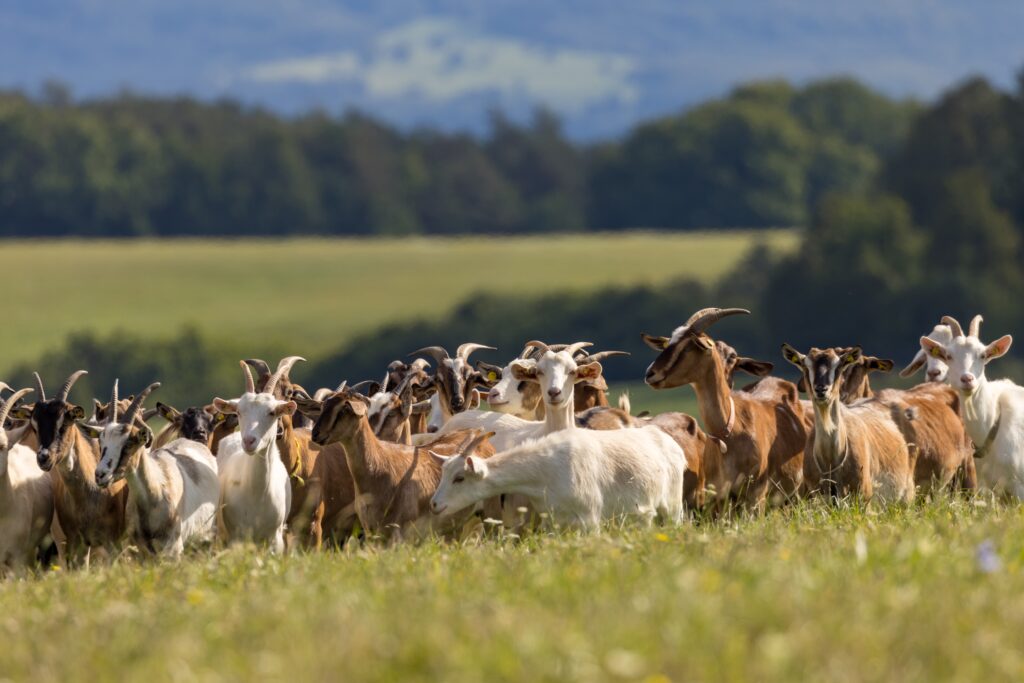
More than 1 billion goats are roaming the planet today, from backyard flocks to mountain herds, making them one of the most widespread domesticated animals. The average goat measures about 3 feet long from nose to tail. Line up every goat on Earth, and you’d get a shaggy, bleating line over 3 billion feet long, about 568,000 miles. That’s enough to circle Earth’s 24,901-mile equator more than 22 times or stretch to the Moon and back. And in some places, especially remote hillsides or islands, goats do seem to be everywhere at once—wandering rooftops, grazing cliff edges, and navigating terrain most humans would avoid.
Their usefulness explains their reach. Goats provide meat, milk, leather, and fiber in nearly every climate, and their ability to survive on sparse vegetation makes them invaluable in places where other livestock fail. Some breeds can scale vertical walls or live at elevations above 10,000 feet. In parts of Africa and Asia, goats outnumber people and are still traded as currency or wedding dowries. In the West, they’ve become both agricultural workhorses and unexpected stars of viral yoga classes. Whether chewing on tin cans or keeping wildfire-prone hillsides trimmed, goats have hoofed their way across the globe with a kind of scrappy, stubborn grace. Source: Food and Agriculture Organization – Global Livestock
Elephants

Elephants may not come close to ants in population, but when it comes to physical scale, they dominate. There are roughly 500,000 elephants left in the wild, both African and Asian species combined. An adult elephant averages about 18 feet in length from trunk to tail. Line them all up and you’d get a massive, moving parade stretching 9 million feet, or 1,704 miles. That’s enough to cross the continental United States from east to west, or circle Earth’s equator just under one-tenth of one time. It’s the smallest planetary wrap in this lineup—but by far the heaviest.
Despite their low numbers, elephants leave oversized footprints—literally and figuratively. They reshape landscapes by toppling trees, digging water holes, and carving trails used by countless other species. One elephant can eat up to 300 pounds of vegetation a day, and their migration paths span hundreds of miles. Their populations may be dwindling, but their legacy, cultural, ecological, and physical, is far from small. If most animals wrap the Earth in sheer numbers, elephants do it in presence. Source: World Wildlife Fund – Elephant Facts
Turns out, Earth’s already wrapped by fur, feathers, scales, and more legs than we can count. Whether it’s a line of ants stretching to Saturn or chickens circling the globe, these species are everywhere (and then some).
Spotted a creature in the wild that felt like it multiplied the world? Drop it in the comments or send it our way, we’re always here for a good animal math moment.
If you liked this story, please give us a thumbs-up so we know to write more stories like this. If you didn’t like it, if we’ve missed anything, or if you would like to pitch your story ideas to Fetch, please let us know in the comments or email Michael Gitter at mgitter@gmail.com


